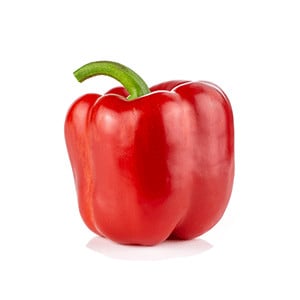Pepper / Paprika

Pepper / Paprika
Capsicum annuum
Plant family
Solanums (Solanaceae)
Season Overview
Propagating
Planting
Harvest
J
F
M
A
M
J
J
A
S
O
N
D
Details
Light requirement
Sunny
Water requirement
Wet
Soil
Light (sandy)
Nutrient requirement
High
Plant distance
40 cm
Row spacing
50 cm
Seeding depth
1 cm
Instructions
The season for this plant has not yet begun. The following instructions are for the beginning season.
Beginning of March
Propagating
Mid of March
Transplanting
Beginning of April
Hygiene
Every two Weeks
Description
Peppers are perennial, cold-sensitive plants that belong to the nightshade family. A distinction is made between sweet peppers and spicy peppers (including chili). There are many different varieties, the fruits of which differ in size, shape, color and pungency.
Origin:
North America
Growing tips
Peppers should be grown in nutrient-rich soil in a sunny location. For a rich harvest, the first flower (terminal bud/'king flower') should be broken out. This will encourage flower and fruit formation on the side shoots. Pull the plants with 3-4 shoots and remove the remaining shoots. In Central Europe, the cultivation is usually annual, but the highest yield is achieved only 2-3 years after planting. For this, the plant must be overwintered indoors. Harvesting of fruits takes place from July to September, depending on the variety and weather conditions.
Companion Plants
Basil
Borage
Broccoli
Brussels sprouts
Cabbage (Cabbage)
Cabbage (Savoy cabbage)
Carrots
Cauliflower
Common marigold
Cucumber / Gherkin
Dill
Garlic
Kohlrabi / German turnip / Turnip cabbage
Lavender
Lettuce (Endive / Escarole / Erisée)
Lettuce (Lettuce)
Napa cabbage / Chinese cabbage
Onion
Onion (Spring onion)
Pak Choi
Parsley
Savory
Thyme
Antagonistic Plants
Diseases
Blossomrot
Early blight of potato
Black spot of roses
Red spot disease
Grey mold
Pests
No pests